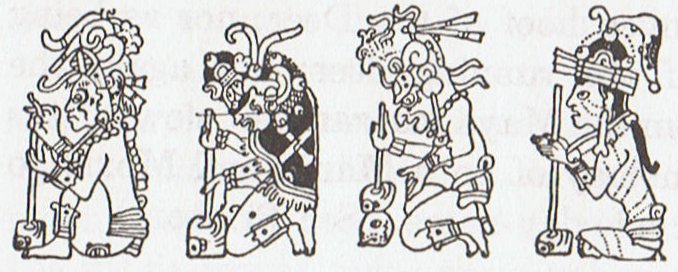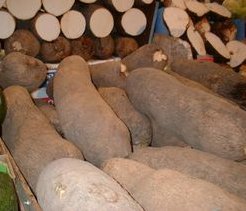A Dove lost its tail feathers
at the Clashing Rocks and when the Fantail (Tiwaivaka)
flickered with his tail it was game over for
Maui.
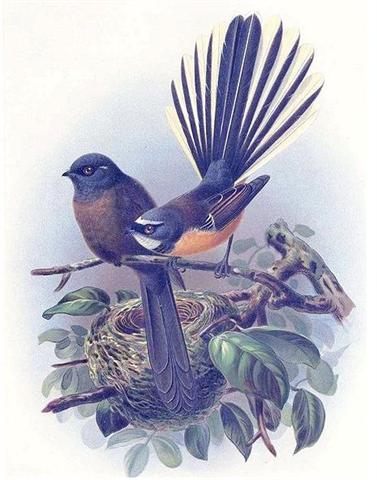
...
My son, said Makea
tutara one evening
at dusk, when they were
sitting outside the
house, I have heard from
your mother and from
others that you are
brave and capable, and
that in everything you
have undertaken in your
own country you have
succeeded. That says a
great deal for you. But
I have to warn you: now
that you have come to
live in your father's
country you will find
that things are
different. I am afraid
that here you may meet
your downfall at last.
'What do you mean?' said
Maui. 'What
things are there here
that could be my
downfall?'
'There is your great
ancestress Hine nui
te Po', said
Makea, gravely.
And he watched Maui's
face as he mentioned the
name of Great
Hine the Night,
the daughter and the
wife of Tane and
goddess of death. But
Maui did not move an
eyelid.
'You
may see her, if you
look', Makea went
on, pointing to where
the sun had gone down,
'flashing over there,
and opening and closing,
as it were'. His
thoughts were on death
as he spoke. For it was
the will of Hine nui,
ever since she turned
her back on Tane
and descended to
Rarohenga, that all
her descendants in the
world of light should
follow her down that
same path, returning to
their mother's womb that
they might be mourned
and wept for.
'Oh,
nonsense', said Maui
affectionately to the
old man. 'I don't think
about that sort of
thing, and you shouldn't
either. There's no point
in being afraid. We
might just as well find
out whether we are
intended to die, or to
live forever.' Now
Maui had not
forgotten what his
mother once said about
Hine nui te Po:
that he would some day
vanquish her, and death
would then have no power
over men. He remembered
this now, and was not
moved by his father's
fears. But Hine nui
was the sister of
Mahuika, and she
knew of Maui's
dangerous trickery at
the abode of fire, and
was resolved to protect
her other descendants
from further mischief of
this kind.
'My
child', said Makea now in a tone of
deep sorrow, 'there has been a bad omen for
us. When I performed the tohi
ceremony over you I missed out a part of the
prayers. I remembered it too late. I am
afraid this means that you are going to
die.' 'What's she like, Hine nui te Po?'
asked Maui. 'Look over there', said
Makea, pointing to the ice-cold
mountains beneath the flaming clouds of
sunset. 'What you see there is Hine nui,
flashing where the sky meets the earth. Her
body is like a woman's, but the pupils of
her eyes are greenstone and her hair is
kelp. Her mouth is that of a barracuda, and
in the place where men enter her she has
sharp teeth of obsidian and greenstone
...
|
... They walked in
crowds when they
arrived at Tulan,
and there was no
fire. Only those
with Tohil
had it: this was the
tribe whose god was
first to generate
fire. How it was
generated is not
clear. Their fire
was already burning
when Jaguar
Quitze and
Jaguar Night
first saw it:
'Alas! Fire has not
yet become ours.
We'll die from the
cold', they said.
And then Tohil
spoke: 'Do not
grieve. You will
have your own even
when the fire you're
talking about has
been lost', Tohil
told them.
'Aren't you a true
god! Our sustenance
and our support! Our
god!' they said when
they gave thanks for
what Tohil
had said.
'Very well, in
truth, I am your
god: so be it. I am
your lord: so be
it,' the penitents
and sacrificers were
told by Tohil.
And this was the
warming of the
tribes. They were
pleased by their
fire.
After that a great
downpour began,
which cut short the
fire of the tribes.
And hail fell
thickly on all the
tribes, and their
fires were put out
by the hail. Their
fires didn't start
up again. So then
Jaguar Quitze
and Jaguar Night
asked for their
fire again:
'Tohil, we'll be
finished off by the
cold', they told
Tohil. 'Well, do
not grive', said
Tohil. Then he
started a fire. He
pivoted inside his
sandal
...
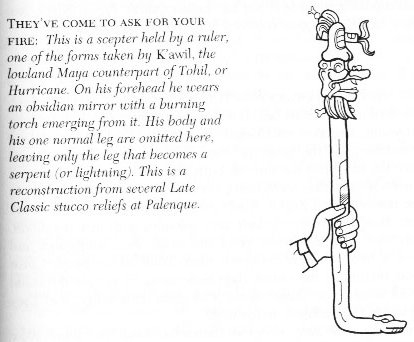 |
|
AUGUST 9 |
10 (222) |
11 |
12 |
13 (*145) |
 |
 |
 |
 |
 |
|
Ga6-1 |
Ga6-2 |
Ga6-3 |
Ga6-4 |
Ga6-5 (145) |
|
HEZE = ζ
Virginis
(205.0),
Southern
Pinwheel Galaxy
= M83 Hydrae
(205.7) |
ε Centauri
(206.3), κ Oct.
(206.4) |
no star listed
(207) |
τ Bootis
(208.2),
BENETNASH
= η Ursae
Majoris
(208.5), ν
Centauri
(208.7), μ
Centauri, υ
Bootis (208.8) |
no star listed
(209) |
|
October 12 (285) |
13 |
14 |
15 (*208) |
16 |
|
°October 8 |
9 |
10 |
11 (*204) |
12 (285) |
|
'September 15 |
16 |
17 (260) |
18 |
19 (*182) |
|
"September 1
(*164) |
Hora Nui 2 |
3 |
4 |
5 (248) |
|
NAKSHATRA DATES: |
|
FEBRUARY 8
(*324) |
9 (40) |
10 |
11 |
12 (408) |
|
ACHERNAR
= α Eridani
(23.3), χ
Andromedae
(23.6), τ
Andromedae
(23.9) |
ALSEIPH
(Scimitar)
= φ Persei
(24.5), τ Ceti
(24.7) |
no star listed
(25) |
ANA-NIA-10
(Pillar-to-fish
by)
χ Ceti (26.1),
POLARIS
= α Ursae
Minoris, BATEN
KAITOS = ζ Ceti
(26.6),
METALLAH = α
Trianguli
(26.9) |
Al Sharatain-1 /
Ashvini-1 /
Bond-16 /
Mahrū-sha-rishu-ku-1
(Front of the
Head of Ku)
SEGIN = ε
Cassiopeia,
MESARTHIM = γ
Arietis, ψ
Phoenicis
(27.2),
SHERATAN
= β Arietis, φ
Phoenicis
(27.4) |
|
April 13 (468) |
4-14 (104) |
15 |
16 (471) |
17 (107) |
|
°April 9 |
10 (100) |
11 |
12 |
13 (*23) |
|
'March 17 |
18 (77) |
19 |
20 (*364) |
0h |
|
"March 3 |
4 (*348) |
5 (64) |
6 |
7 |
... Heliacal Heze (ζ
Virginis) was not in Hora Nui 2
[the date at which Hotu A Matua had left his old
homeland in his double canoe]
but in Hora Nui 1, and this day was
in Manuscript E [instead] singled out as the day for
the return of the Explorers to the yam
plantation created by Kuukuu (E:46)
...
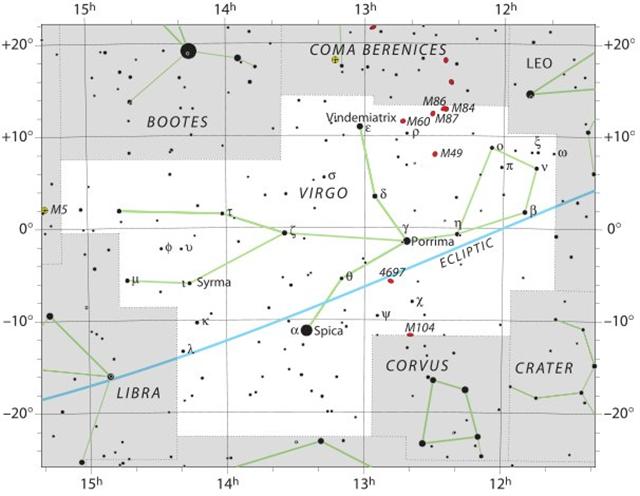
Here the yam plantation of
Kuukuu appears to refer to heliacal
Heze, although this place had been completed
78
days earlier at 'the top of the
hill', which could be referring to the Cancer
carapace:
... They all climbed to the
top of the hill. They climbed up on the
tenth day of the month of June ('Maro')
... They made camp and constructed a house.
Kuukuu got up, worked the ground, and
heaped up the earth for the yam roots.
Makoi got up and began to familiarize
himself with the (new) land. (This took
place) on the fifteenth day of the month of
June ('Maro') ...
|
The canoe
continued its
exploration and
in a sweep
sailed on to
Hanga Te Pau.
|
hokoou.he rarama
he oho te vaka
he vari ki
hanga.te pau
|
p. 17 |
|
They went ashore
and took |
he tomo ki
uta.he too |
|
the food with
them. |
i te kai ki uta. |
p. 18 |
|
They pulled the
canoe onto the
beach and left
it there.
|
hee totoi i te
vaka ki uta he
hakarere. |
|
Ira
sat down with
all the other
(companions) |
he noho a ira
anake. |
|
and spoke to
Makoi: |
he ki a Ira.ka
ki era kia
Makoi. |
|
'You shall mark
the land for me
and make it
known (by its
name)!' |
maau e tuki e
haite te kainga. |
|
After that,
Ira spoke
these words: |
he ki hokoou a
Ira.ka ki era. |
|
'This is the
digging stick (?
ko
koko),
Kuukuu. |
kokoko e Nguukuu
e. |
|
You shall work
the land for me
and plant the
yam roots!' |
maau e keukeu e
oka te uhi. |
|
Uhi Yam
(Dioscorea alata); a large
tuber, one of the main staple foods
in ancient times, of which some 40
varieties were grown.
Uhi-uhi,
to sew (also: tía);
ka-uhiuhi toou nua, sew yourself
a cape. Vanaga. Yam. P Pau., Mgv.:
uhi, id. Ta.: uhi,
ufi, id. Mq.: puauhi, id.
Uhiuhi An
endemic legume (Mezoneuron
kauaiense), a tree with pink or
red flowers and thin, broad, winged
pods. The wood is hard and heavy and
formerly was used for hōlua
(sleds), spears, digging sticks, and
house construction. Also kawa'ū,
kea, kolomona, and the
weedy herb Phaseolus lathyroides
(Niihau). Ho'o uhiuhi,
to prepare uhiuhi wood for
house posts. Wehewehe.
Uhi 1.
Covering, cover, veil, film, lid,
solid tattooing, tent; to cover,
spread over, engulf, conceal,
overwhelm; to don, as a feather
cloak. Fig., to deceive, hide the
truth. Kākau uhi, to tattoo
solidly. Uhi mai ka lani pō,
the night sky spreads forth
(ignorance). Ua uhi 'ia kō lāua
mau mana'o i ke aloha, their
thoughts were overwhelmed with love.
Uhi i ka moe, to make a bed.
2. Large, bluish-brown birthmark. 3.
The yam (Dioscorea alata),
from southeast Asia, a climber with
square stems, heart-shaped leaves,
and large, edible, underground
tubers. The plant is widely
distributed through islands of the
Pacific, where it is commonly grown
for food. Also pālau,
ulehihi. In the past botanists
have applied the name uhi
incorrectly to the hoi kuahiwi.
4. Mother-of-pearl bivalve,
mother-of-pearl shank. 5. Turtle
shell piece used for scraping
olonā. 6. Mark made by the gall
of raw pūpū 'awa (a
shellfish) on tapa or on the
skin as an ornament. Wehewehe. |
The niu (sign of a
young coconut
plant) in Ga2-29 was incised deeply. At the time of rongorongo this
was an important π day
(22 / 7).

Tegmine (ζ Cancri) was a star in the middle
between the claws at her back:

... This lies on the rear
edge of the Crab's shell, and it is known as
Tegmine, In the Covering ...
We can safely identify the
yam plantation of Kuukuu with Ga2-29
because this explains why Ga2-29 was drawn in such an exceptional way:
 |
 |
|
niu |
uhi |
A little coconut palm (niu
instead of nikau which means a grown
up example) is not hidden by heaped up earth
and therefore the yam plants had to be visualized in
another way. Tubers must be covered up.
Barthel (The Eighth Island,
p. 108) has listed 39 varieties of yam. Then
he gives a valuable further comment: "In Ms. E, the numbers 19 and
33 [in his list] are omitted, which accounts
for the fictitious total number of 41."
The creators of Manuscript E
were surely here giving its readers a Sign.
|



